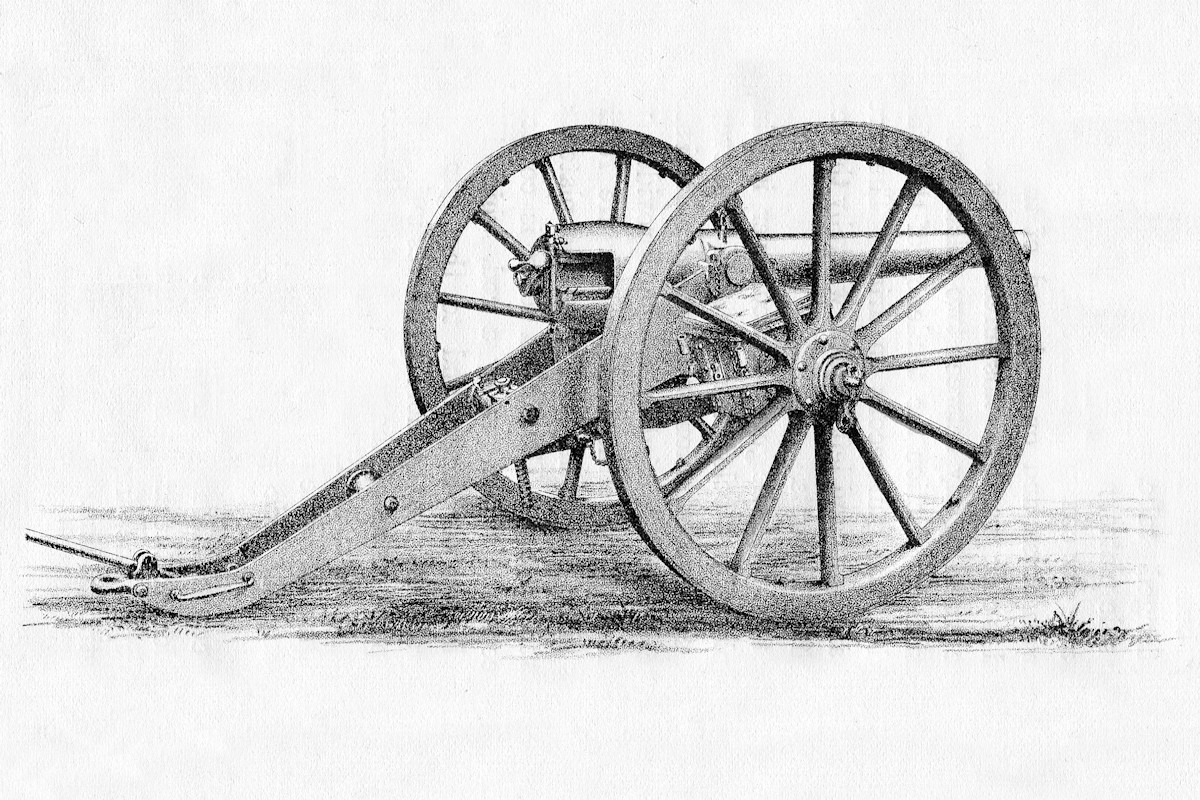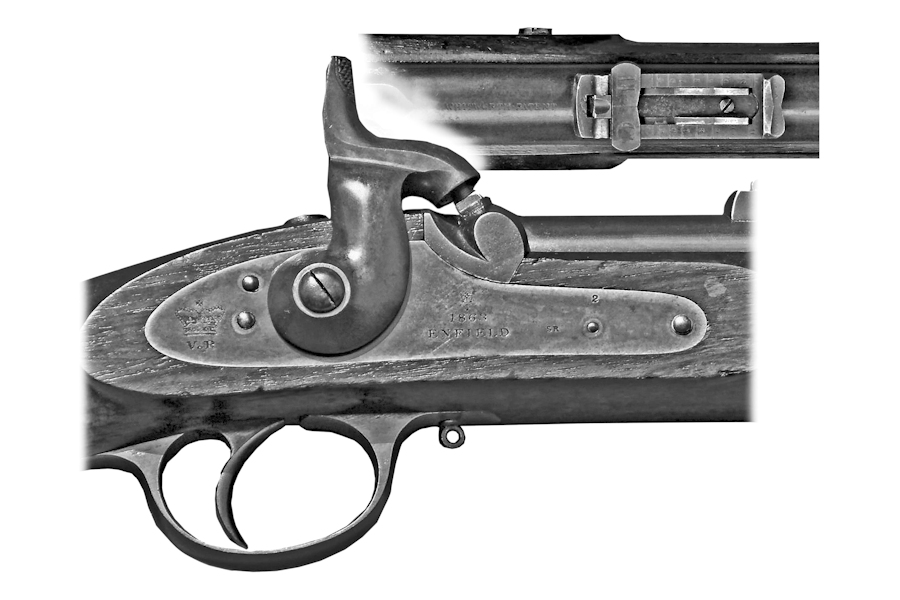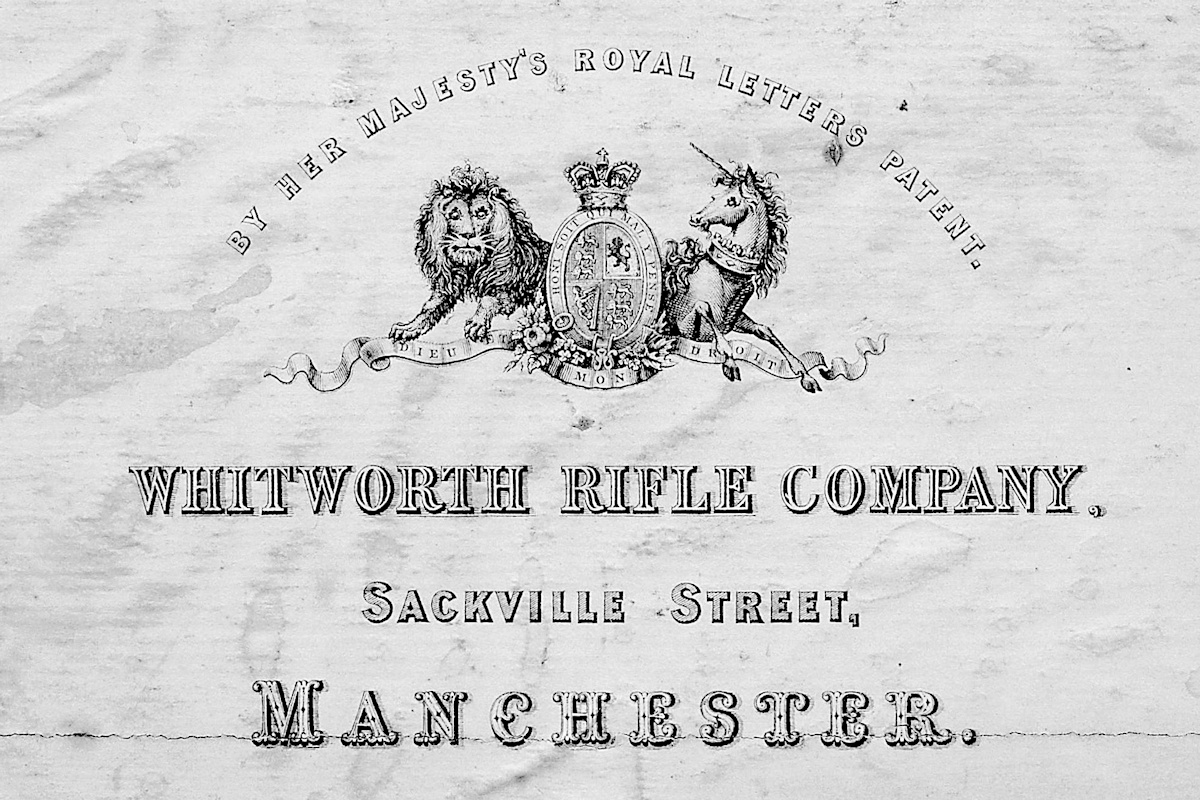You are here: Home > Research > Hex Bore
Source: The Times, London, UK, 13 September 1870
To The Editor Of The Times
Sir, Permit me to make an appeal through your columns against the arming of our troops and Volunteers with short-range rifles, whether of the Snider-Enfield or any other pattern. Other nations are rapidly abandoning their use, and are arming their troops with long-range rifles. The supply of the more powerful weapon to our own troops has already been too long delayed.
It may be well to mention that the Snider-Enfield is as a large-bore rifle, firing a bullet .577in. in diameter. To give a bullet of this diameter great range, accuracy, and penetration it would be necessary to make it much longer and to fire it with an increased powder charge, and this would occasion too great a recoil in a gun of 9.5lb. weight. If the soldier could carry a rifle weighing 14lb., and increased weight of ammunition, then the Enfield bore with a longer bullet would be right; but as this is not practicable, and as the bullet must be long in proportion to its diameter in order to range far and accurately, the bore has to be reduced. All the facts involved in these and similar considerations were fully worked out by me in 1857, by the desire of the Government, the result being the adoption of a bore .45in. in diameter, and a bullet three diameters long. From 1857 to 1862 some of our military officers gave great opposition to the introduction of the small bore, but in the latter year a committee reported strongly on the advantages of the new arm, and recommended its partial adoption. Their recommendation was carried out, and the War Office have supplied small-bore rifles to the Volunteers at Wimbledon ever since for shooting for the Queen’s Prize for all ranges above 600 yards. That the proportions adopted were right is shown by the fact which the committee reported – viz., that “the makers of every small-bore rifle having any pretension to special accuracy have copied to the letter the three main elements of success adopted by Mr. Whitworth – viz., diameter of bore, degree of spiral, and large proportion of riding surface.”
In all discussions upon the performances of guns, small or large, it ought to be most carefully borne in mind that the primary element of success in long-range shooting is length of bullet. I mention this because I continually see the good and bad shooting of guns attributed to methods of loading and to other merely secondary causes. Methods of loading merely affect the rapidity with which guns can be fired; great range, accuracy, and penetration are obtained by employing the long bullet, with the proper twist of rifling and the greatest powder charge the bore can consume, and by no other means. It is of the greatest importance that this should be more clearly understood than it has hitherto been. Of the two rifles used in the present war the Prussian needle-gun is wrong and the French gun right as regards bore. The Prussian bore is larger even than the Enfield, although this defect is partly remedied by the bullet being smaller, a papier-maché envelope embracing it and filling up the bore. The bullet proper is, however, .534in. in diameter, and only two diameters long. The French bore and twist of rifling are right, being practically the same as those of our small bore, and the bullet is two and a half diameters long. Fired with a large charge of powder (85 grains against the 70 grains of the needle-gun) this bullet, although shorter and lighter than it should have been, ranges low and with great velocity up to 1,500 yards. The Chassepot is, therefore, a very deadly weapon at long range as compared with the Prussian arm, and must have been very destructive when properly used.
The superiority of its shooting at moderate ranges may be inferred from the fact that with a given elevation the Chassepot will range 500 yards and our own Enfield only 295 yards. The superiority of my small bore at all ranges, when all its conditions are observed, is well known. Last year a special committee on breech-loading rifles concluded their labours and addressed an elaborate report to the War Office, in which they said, –
“The calibre is to be .45in., as appearing to be the most suitable for a military arm, not only from the results of the experience already gained, and from the evidence received, but also from the reports of the previous committee who had recommended that bore as likely to produce the best results.”
It is not right, in the face of these facts and of the adoption of the far-hitting rifle by other European Governments, that we should go on ordering rifles of the old large-bore type for the use of our Army and Volunteers. The Government should without further delay begin to arm our troops with breech-loading small-bores. If the Henry-Martini plan of breech-loading is not found altogether satisfactory, have others as well – the Westley Richards, for instance, the mechanical arrangements of which are superior. There is but little objection (as is found by sportsmen) to having guns from two or three makers with different breech-loading arrangements, care being taken that all use the same cartridge. Whichever proves best on actual service can afterwards be exclusively adopted.
The selection of the best form and dimensions of cartridge is a mechanical and not a military question, and may have presented a difficulty to the War Office, but the existence of such a difficulty is no excuse for giving our troops short-range rifles. The proper course to take is to determine upon a standard cartridge of well-considered form and proportions, and to adopt it in connexion with the .45in. bore, for all military arms. The disadvantage sustained by troops armed with large-bore guns in presence of others armed with the small bore is terrible; the superior weapon has been, and is being, very largely manufactured in this country for European Governments, and I hope that, in case we are involved in war, our men will not be sent into the field with short-range muskets. There is nothing so likely to shorten the duration of war, and to prevent the resort to war, as the horrible effect of destructive power at long distances.
I had written thus far when the remarkable letter of your Berlin Correspondent, in The Times of yesterday, came under my notice. It furnishes a practical comment upon what I have written above, and I ask your permission to quote the following brief extracts:
“It is a curious but well-authenticated fact that many German soldiers only in the hospitals saw what the French look like, having been wounded at distance where all they could discern of the enemy was a dark indefinite mass.
“Diplomatic circumstances combined with the inferior mechanism of their gun to the disadvantage of the Germans. Diplomacy demanded that they should assume the offensive in every encounter, though the arm they were going to face rendered such bravery extremely dangerous, while, as regarded Dreyse’s original invention, specimens of which they held in their hands, it had been surpassed by Chassepot, and there was nothing left but to offer themselves to be slaughtered, without being able, at least in the introductory stages of the fight, to reciprocate to the some extent.
“Among the many memorable facts of the campaign it will no doubt be duly chronicled by history that the range of the Chassepot being 1,800 paces, and that of the needle-gun only between 600 and 700, the Germans in all their charges had to traverse 1,200 paces before their arm could to used to some purposes.”
These extracts make a stronger appeal to our authorities than I can offer, and I hope that appeal will not be in vain.
I have the honour to be, Sir, your obedient servant,
JOSEPH WHITWORTH
Manchester, Sept. 9.


